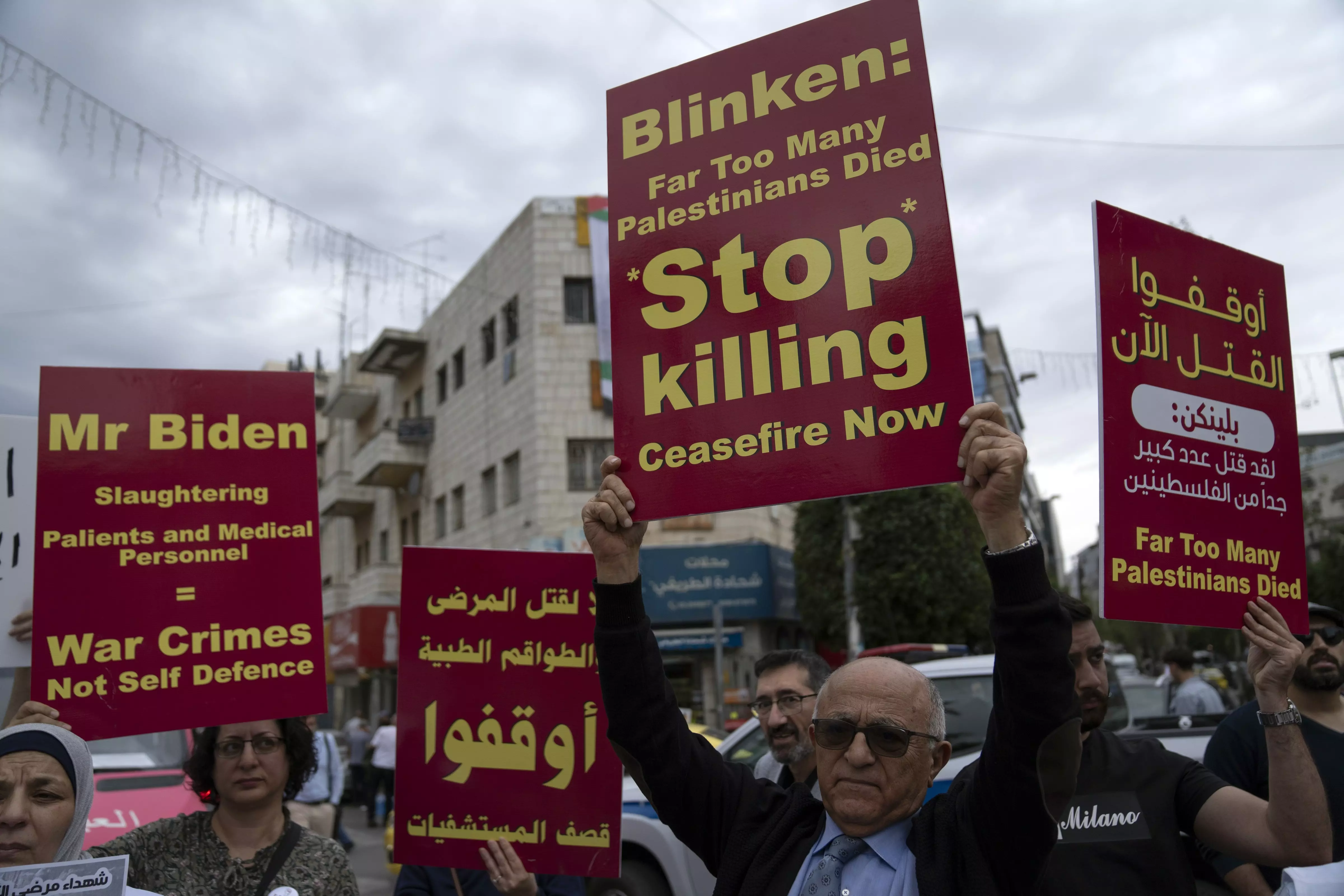
- Home
- India
- World
- Premium
- THE FEDERAL SPECIAL
- Analysis
- States
- Perspective
- Videos
- Sports
- Education
- Entertainment
- Elections
- Features
- Health
- Business
- Series
- In memoriam: Sheikh Mujibur Rahman
- Bishnoi's Men
- NEET TANGLE
- Economy Series
- Earth Day
- Kashmir’s Frozen Turbulence
- India@75
- The legend of Ramjanmabhoomi
- Liberalisation@30
- How to tame a dragon
- Celebrating biodiversity
- Farm Matters
- 50 days of solitude
- Bringing Migrants Home
- Budget 2020
- Jharkhand Votes
- The Federal Investigates
- The Federal Impact
- Vanishing Sand
- Gandhi @ 150
- Andhra Today
- Field report
- Operation Gulmarg
- Pandemic @1 Mn in India
- The Federal Year-End
- The Zero Year
- Science
- Brand studio
- Newsletter
- Elections 2024
- Events
- Home
- IndiaIndia
- World
- Analysis
- StatesStates
- PerspectivePerspective
- VideosVideos
- Sports
- Education
- Entertainment
- ElectionsElections
- Features
- Health
- BusinessBusiness
- Premium
- Loading...
Premium - Events

A year later, the questions uppermost are: Why did Hamas mount such an attack on Israel? What did it achieve for the Palestinians?
There was a feeling of dread when news came in exactly a year ago that the Hamas had entered Israel, attacked and killed the civilian population and whatever troops and security infrastructure they could see. They returned to Gaza taking hostages.
It was not just the Israelis who reeled from shock over the unexpected attack. The rest of the world, including Palestinian supporters, looked on disbelievingly at the speed, scale and intensity of the Hamas operation. They had actually managed to penetrate what was always thought to be a fortress, with ease.
Israeli campaign in Gaza
Some 1,200 Israelis died, of which around 400 were soldiers. Many more were injured. Around 250 were taken hostage.
For someone following the Israeli-Palestinian conflict over the years, the first question that cropped up was: Why the attack? What purpose did it serve? And, more importantly, how would Israel respond? A country that usually sent in its F-16 fighters to bombard Gaza in response to minor rocket firings, the October 7, 2023 attack could bring out the worst. That’s why the feeling of dread.
Watch: How ties with US makes Israel unstoppable | Worldly-Wise
A year later, the fears have proved right. Israel has used the Hamas attack to literally pulverise Gaza. Using the excuse of hunting down the Hamas, over 41,000 Palestinians in Gaza have been killed, thousands injured and the entire population in the tiny enclave has been displaced from their homes.
With the United States in full support, Israel has completely disregarded pleas from other nations to stop its blood-letting and is on an unending rampage of a kind the current generation has only heard about in history, but never seen.
The fighting is spreading now. Israel is going after the backers of Hamas, the Hezbollah in Lebanon and their mentor, Iran. The region is teetering on the edge of a full-fledged war, the consequences of which are too fearful to contemplate.
Hamas attack: A result of deep frustration
The issue really is, why the Hamas attack? What did the group hope to achieve by its shock-and-awe tactic against Israel? The oft-quoted response has been that the attack was the result of deep frustration at having to live under a state of siege in Gaza.
Life, by all accounts, was tough. Having to constantly deal with harassment at Israeli check-points, cantankerous Jewish settlers, rationing of daily essentials and the absolute absence of any freedom drove Palestinians to the edge. The Hamas went in for the kill.
Also read: Heartbreak turns to rage in Israel. Can Netanyahu survive the heat?
They probably hoped to tell the Israelis that they could be targeted too, their lives could be made insecure and they were not as powerful as they projected themselves.
The Hamas may have been right, but their view was heavily blinkered by their own debilitating experiences in Gaza. Whoever in the Hamas leadership planned the attack did not appear to have thought through their manoeuvre. The need for secrecy may have prevented wider consultation among their friends.
Oct 7 attack helped Israel tweak the narrative
The Hamas, it turned out, provided Israel the perfect excuse to go all out against Palestinians in Gaza, an opportunity it appeared to be waiting for.
For the Benjamin Netanyahu government and Israeli spin doctors, October 7, 2023, became the starting point of the Israeli-Palestinian conflict. And, the world seems to have bought the revised narrative. Much of the world, for whom the decades-old conflict made little sense, woke up to it only on October 7 last year.
The powerful mainstream Western media, led by the United States, largely supportive of Israel fed the narrative of a “terrorist” attack by Hamas. Already designated a terrorist group by the United States, much of the world unquestioningly went by this description of the group and its attack.
The raw intensity of the Hamas attack, captured by a slew of cameras, in effect has effaced the long tortuous history of the Palestinians who over the last seven decades starting from 1948, have been forcibly evicted from their homes, lands and properties to be replaced by Israel-sponsored Jews – to create a Jewish homeland.
Hamas, a long-term threat for Israel
At the time when the attack happened last year, the original Palestine region had already been occupied by Israel. The West Bank and Gaza strip were notionally Palestinian, with a superficial layer of autonomy, but actually under Israel’s control.
Also read: Israel-Iran conflict: What's Axis of Resistance vs Abraham Alliance; is a war inevitable?
The Hamas (acronym in Arabic for Islamic Resistance Movement) was hugely popular in Gaza. Since its formation in 1987, it had engaged in social work in the area. In 2006, Hamas won elections in the Palestinian Legislative Election, defeating the ruling Fatah, a secular group that was once led by the iconic Yasser Arafat.
But Israel and the US could never accept Hamas’s electoral victory. Unlike the PLO which had formally recognised Israel and its right to exist in 1993, Hamas did not accept Israel as an entity. The Jewish state therefore viewed the Palestinian group as a long-term threat.
How skirmishes gave way to war
Over time, Israel made it difficult for Hamas to function. It arrested its elected representatives, among other things. Between 2007-2021, the two fought four wars. Israel placed Gaza under siege in an attempt to force people to overthrow Hamas. It succeeded only partially.
Hamas fighters let out their frustration occasionally firing rockets (small-to medium range) into Israel that did little or no damage. But each time, the Hamas fired rockets, Israel would send in its F16 fighters, armed helicopters and raze parts of Gaza to the ground.
Also read: Israel 'won't last long', warns Iran's supreme leader Khamenei
The conflict meandered on with Israel slowly and steadily turning Gaza into a veritable ghetto. Life, according to reports, was tough following 17 years of siege. Civilian protests were met with fierce Israeli responses. Many Palestinians were shot dead, scores more were arrested and lodged in Israeli prisons while all the time new illegal settlements were coming up on land meant for a future independent Palestine nation.
Oct 7 attack wiped out memories of Palestine’s struggle
The frustration, if that was indeed the main motive of Hamas’s attack, was understandable. But it has turned out to be spectacularly counterproductive. October 7 has helped Israel manage to wipe out the memory of seven decades of Palestinian struggle. An estimated 41,000 Palestinians have been killed in Israel’s assault on Gaza in the last one year. The scale of displacement and suffering of Gazans is too large to justify anything that the Hamas may have hoped to achieve.
It may be difficult for the Palestinians and its supporters around the world to digest, but the fact is today the balance of power heavily favours Israel. Backed by the US, and Western Europe, Israel can literally get away with murder. The one organisation that could have intervened, the United Nations, has been rendered impotent thanks to the absurd logic of the veto in the Security Council.
Watch: The Israel-Iran conflict expanding into unconventional regional war
The United States is blindsided by its organic and strategic relationship with Israel. If the situation ever demands, the US will not even hesitate to directly step into the arena to protect Israel, such is their relationship. Each has overlapping interests that cannot be separated. They practically act as one entity. That being the case, how can the Palestinians and its supporters ever hope to get justice.
An alternative that wasn’t used
But seven decades is but a blink in historical time. In the past, for at least a couple of centuries if not more, the Jews were hounded across Europe and were subject to mass killings in Hitler’s Germany. Today, they are setting the narrative. In the 1800s or even for much of the 1900s, could anyone have even imagined today’s situation?
The Palestinians too will get their day in the sun. People may have a short memory. But history does not forget, nor forgive. The Hamas top brass could have paused before they went in for their fatal adventure on October 7. Instead of violence, they could have figured out a non-violent, peaceful method of protest. This is one mode of protest that governments fear around the world.
There are too many examples. The change of guard in Tunisia, Egypt for instance. More recently, in Bangladesh.
The peaceful protests against Israel may not have attracted eyeballs around the world, but in effect, would have pressured the Israeli government to change its ways. If not immediately, at least in some time with sustained effort. The lives of so many thousands could have been spared.
Sadly, that was not to be. The world, already reeling from violence and wars in other parts of the world, will now have to contend with the looming conflict in the Middle-East that has the potential to envelope the rest of the world.


